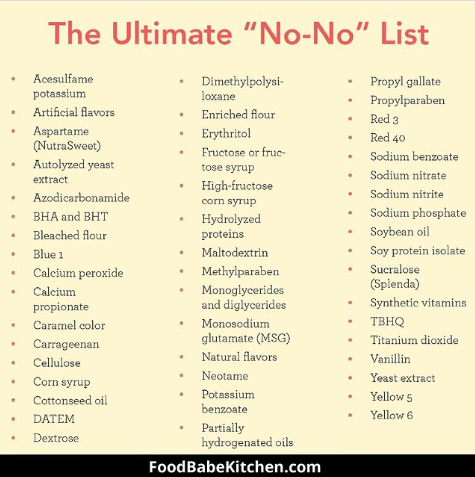How full is your toxin barrel and tips to reduce your toxic load
Every time we eat, breathe, produce energy, our cells create waste by-products. All this waste must be properly eliminated to maintain optimum health.
In our modern world, our body does not only have to deal with the natural waste we create internally, but it has tens of thousands of toxic chemicals, metals, mold toxins, pathogens, bacterial toxins that it must find a way to expel without doing harm to the internal systems.
We are constantly exposed to toxins, but this is not something to be fearful about. We can make educated choices to avoid most toxins and support our body adequately to deal with the ones we can’t avoid.
When your body is exposed to too many toxins, it starts to accumulate the ones that it can’t eliminate. These toxins get stored away in adipose tissue (aka fat). We eventually meet our upper limit of storage, which is dictated by age, genetics, gut microbiome, lifestyle, dietary habits and other factors.
In order to understand this, I will explain it using the analogy of your body as a giant barrel.
Visualize a barrel that is open on top to capture rain, and only has a small spout or “drain” at the bottom. Imagine pouring water into your bucket. As it begins to fill up, the water naturally drains out of the bottom through the drain spout as long as the spout is open/not clogged.
We don’t want our barrel to become too full, too heavy to carry, or loose it’s functions.
When our barrel accumulates too much water, it can start spilling everywhere, creating flood, damaging other things in its way. There is only so much room in the bucket for it to be filled before it overflows. It is our job to monitor the water intake, intentionally lower the load.
The same theory applies for our own bodies, from the moment of conception (yes, we already start accumulating toxins in our mother’s uterus.) as we go through life, we continue to fill up our imaginary barrel with “water”. So what does this water contain?
Various toxins (pollution, manmade chemicals, food toxins, GMOs. Medications, EMFs, heavy metals)
Stress (physical, emotional, spiritual)
Trauma (past/present)
Pathogenic organisms (bacteria, viruses)
Genetic mutations/predispositions
Some of us start off with a barrel that is more full than other people’s. It’s also worth mentioning that the size our barrel can be different from other’s and there are no two barrels that are exactly the same.
When your bucket overflows, it will continue to take on more water, but not without spilling its contents. At this time, you will start to develop certain symptoms of internal imbalances. You may see or feel pain, skin issues, headaches, fatigue, inflammation, weight gain, loss in vitality or any other sign of poor health.
So what can we do about it?
…
Where to start: Reducing your toxin burden
There are many ways you can reduce the flow of toxins to your barrel. Here we will share a few tips and recommendations that can help alleviate the burden. Some of them are easy habits you can start incorporating without any financial investment.
Start reading ingredient labels:
Unfortunately our modern world is filled with options for processed foods and personal care products that are filled with toxins, chemicals and harmful substances. Eg: Seed oils, Preservatives, High Fructose Corn Syrup, Phthalates, Parabens, BPA, Triclosan, Fluoride, SLS, Formaldehyde, Fragrance, Petrolatum, Artificial colors and dyes etc.
Refer to this list of ingredients to avoid
Prioritize organic/quality produce when you can:
Refer to the most recent EWG’s Dirty Dozen, Clean 15 list
Shop seasonally to save some money on produce.
Look up and connect with local farmers
Don’t forget about the freezer section for fruits and vegetables. They are usually cheaper than fresh, frozen quickly and reduce exposure to travel and processing related contaminants.
If you have it in you, grow/preserve your own food
Consider filtering your drinking and bathing water (visit our Shop page)
For recommended products, you can also visit the ewg.org/tapwater/database if you’re curious about what contaminants might be in your local drinking water and check out additional filter options.
Utilize non-toxic Kitchenware:
use glass containers instead of plastic
avoid microwave use
switch out nonstick coated pans for stainless steel or cast iron
Switch cleaning, household and personal care products
for less or nontoxic options.
Visit our Shop page for the brands we trust.
Reduce your EMF Exposure:
turn of your Wifi at night
Cover your smart meter with an EMF mitigating cover.
invest in EMF mitigating devices and accessories.
Check out our blog post for tips on EMF mitigation
Consider filtering your indoor air.
Invest in an air filter for common spaces and bedroom. (Chek out our Shop page for the Air purification systems we trust)
Open windows periodically at least 10 minutes a day for fresh air
Change the furnace filters and air purifier filters as needed
Remove shoes inside the home.
You can limit the amount of dirt and other particles (eg mold, pesticides, parasites etc) that get tracked inside throughout the home, contributing to the overall air quality.
I would like to emphasize that there is no way to avoid all toxins that surround us. Maintaining a positive attitude, instead of cultivating fear from our environment is crucial to experience overall well-being. Stressing about toxins all the time can cause significant stress and affect your nervous system negatively, potentially causing more harm than the actual toxins you are worried or stressed about. Do your best to live a non-toxic life, but make sure it is not costing you your mental and emotional health. Meditation, gratitude, prayer and other spiritual practices can help you get centered and keep your focus on things that elevate you on your journey to achieve your goals.

